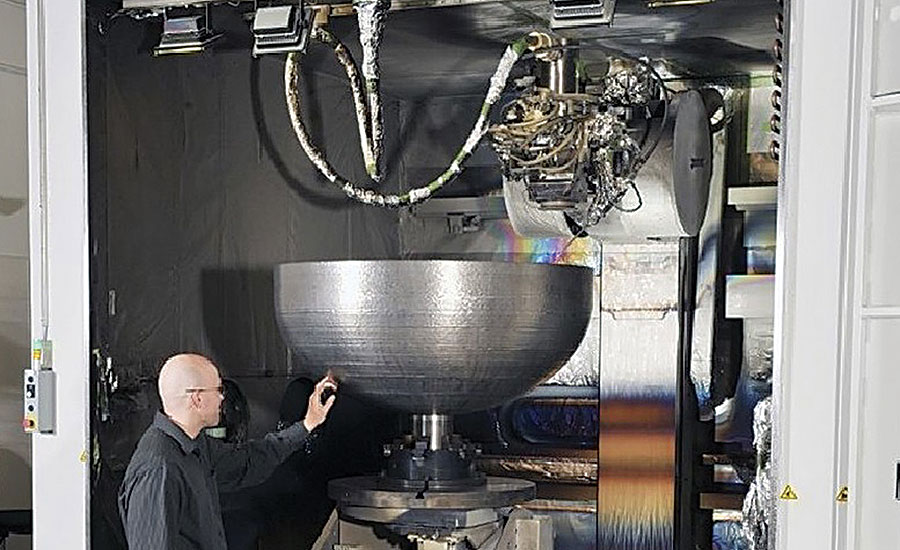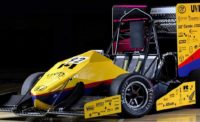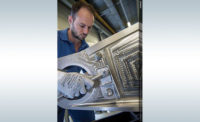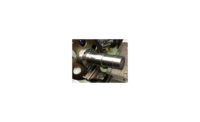Whether a manufacturer is large or small, it’s always interested in saving money—whether it’s a large or small amount. Consider a huge company like Lockheed Martin Space Systems, and its constant need to cut costs in every aspect of a project, such as parts needed to build a satellite.
This priority was front and center for Lockheed in September 2012 when it hired Sciaky Inc. to determine if 3D-printed titanium parts were the same or better quality than traditionally forged metal parts. The titanium Sciaky tested was Ti-6Al-4V, a lightweight, highly durable Grade 5 metal. Over the course of several months, metallurgical experts at both companies discovered that the tank was of higher quality, cost less to make, and reduced material waste and production time.
“The tank was 3D printed with [Sciaky’s] Electron Beam Additive Manufacturing (EBAM) system,” explains Marilyn A. Hewson, chairman, president and CEO of Lockheed Martin. “The tank met our customer’s performance standards, with a 55 percent reduction in cost, a 75 percent reduction in waste and an 80 percent reduction in the amount of time needed to manufacture it.”
Starting with a 3D model from a CAD program, the EBAM system’s electron beam gun (or guns) deposits metal (via wire feedstock) layer by layer, until the part reaches near-net shape and is ready for finish machining. Equally important is EBAM’s patented closed-loop control—called IRISS (Interlayer Real-time Imaging and Sensing System)—that ensures consistent geometry, mechanical properties, microstructure and metal chemistry for every part.
With this system, Lockheed produces parts from less than 8 inches to more than 19 feet long. Speed-wise, EBAM offers gross deposition rates of 7 to 20 pounds of metal per hour. The system comes with a dual wire-feed option that enables Lockheed to combine two different metal alloys into a single melt pool to create custom alloy parts or ingots that don’t need to be joined or welded together before use. In addition, the manufacturer can change the mixture ratio of the two materials during the printing process to create graded parts or structures.
EBAM technology was originally launched as a service in 2009 for manufacturers looking to save significant money and time on the production of critical metal parts and prototypes. Today, Sciaky’s EBAM services team is able to produce critical parts and prototypes made of titanium, tantalum, Inconel and other materials.
“Just as our customers rely on our ability to deliver breakthrough technologies, they also need us to pursue innovation in manufacturing, materials and sustainment—all of which are key drivers of cost and value,” explains Hewson.
“Major advances in additive manufacturing are making a significant impact.”
Along with EBAM technology, Sciaky offers electron beam and advanced arc welding systems and services worldwide for the defense, automotive, healthcare and other industries. The company’s welding equipment meets rigid military specifications to manufacture items such as airframes, landing gear, jet engines, guided missiles and vehicle parts.
For more information on metal additive manufacturing, call 877-450-2518 or visit www.sciaky.com.




